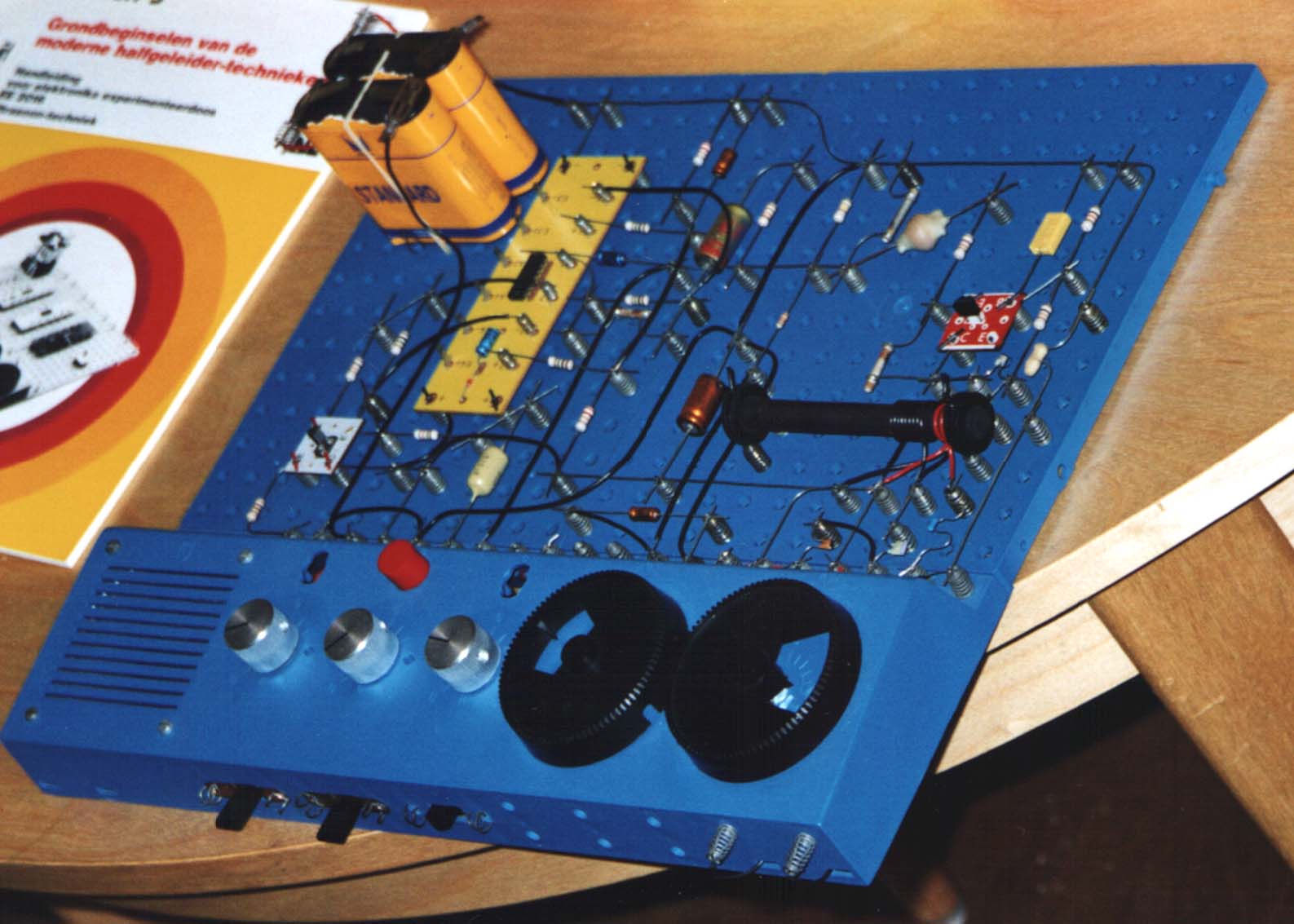
Philips EE kits: New designs (EE2000, EE2001)
Keywords: Philips EE kits, EE2000 series, EE2001 series, LM3900, Regenerative Short Wave Receiver, FM superreg
This page contains new designs for the Philips EE kits that I have developed. Some of these are just adaptations of existing EE designs. Note that if the summary is absent a document is not yet available, but will be soon.
1. 1 Enhanced EE2003-based Short Wave Receiver ( PDF document) (MS-Word document)

Summary:
This article describes a small enhancement I made to the EE2003 Short Wave (SW) receiver that turns it into a simple but sensitive and user-friendly world receiver. This so-called regenerative receiver can be used for both general short wave listening on the 49m, 41m and 31m AM-type broadcast bands, as well as for SSB (Single Side-Band) reception of amateur and marine/aircraft stations. The major change is the addition of regeneration control which allows the receiver to be tuned for optimal sensitivity/selectivity for the complete frequency range (5.8 - 10MHz) as well as the addition (for SSB reception) or removal (for broadcast reception) of the regeneration "beat-note" frequency. With this design, I have received - from my home location in the Netherlands - several distant broadcast stations like All India Radio, Radio Yerevan (Armenia), Radio Bangkok, Radio Tokyo, Australia etc. and various European SSB amateur stations without using an external antenna.
Construction Diagram I (Full-transistor version, created by Tor Gjerde): Link to PDF version

Construction Diagram II (LM3900 version, created by Tor Gjerde): Link to PDF version

1.2 Adaptation for a 80m receiver (3.5 - 4.0 MHz)
The receiver presented above can be easily adapted to enable reception of the popular 80m amateur band. To this end the following changes in the circuit have to be implemented (all in the RF part around the red transistor T1):
Calibration can be done by slightly pulling or contracting the main coil; at 4.0 Mhz there is a very strong German broadcast station that you can use to locate the upper end of the 80m band. The lower bound can be located experimentally by searching for the amateur station with the lowest frequency. In any case you may also use any small commercial SW receiver to get an indication of the reception frequency (since a regenerative reciever is also a small transmitter at its reception frequency!). In between 3.5MHz and 4.0MHz you will find a multitude of amateur signals, often with very good reception quality. Selectivity is also much better than in the 30m, 40m, and 45m bands (due to the large number of coil windings), which implies that you can listen to these stations in the evening without annoying interference of strong broadcast stations. In case you want to use an antenna as well, you probably best add a few windings to the antenna coil (since the antenna acts as a small capacitor, and the antenna and the antenna coil act as a series--resonant LC combination).
2. Superreg FM receiver for airplane communications (108-118 MHz) and commercial FM (98-108 MHz) ( png-file, 300dpi)

3. Superhet based on 3 ICs (SA612A Oscillator/Mixer, ZN414 AM radio, LM3900 amplifiers)
This receiver has a sensitivity comparable to standard commercial receivers. A description of a shortwave version (5.6 MHz - 10 MHz) is available via the following link: PDF document. The photos below show a very similar AM version that will added to this document very soon.



4. Electronically controlled KNeX-car (Philips EE + KNeX construction)

Contact: ej CURLY_A kranenborg PUNKT org"